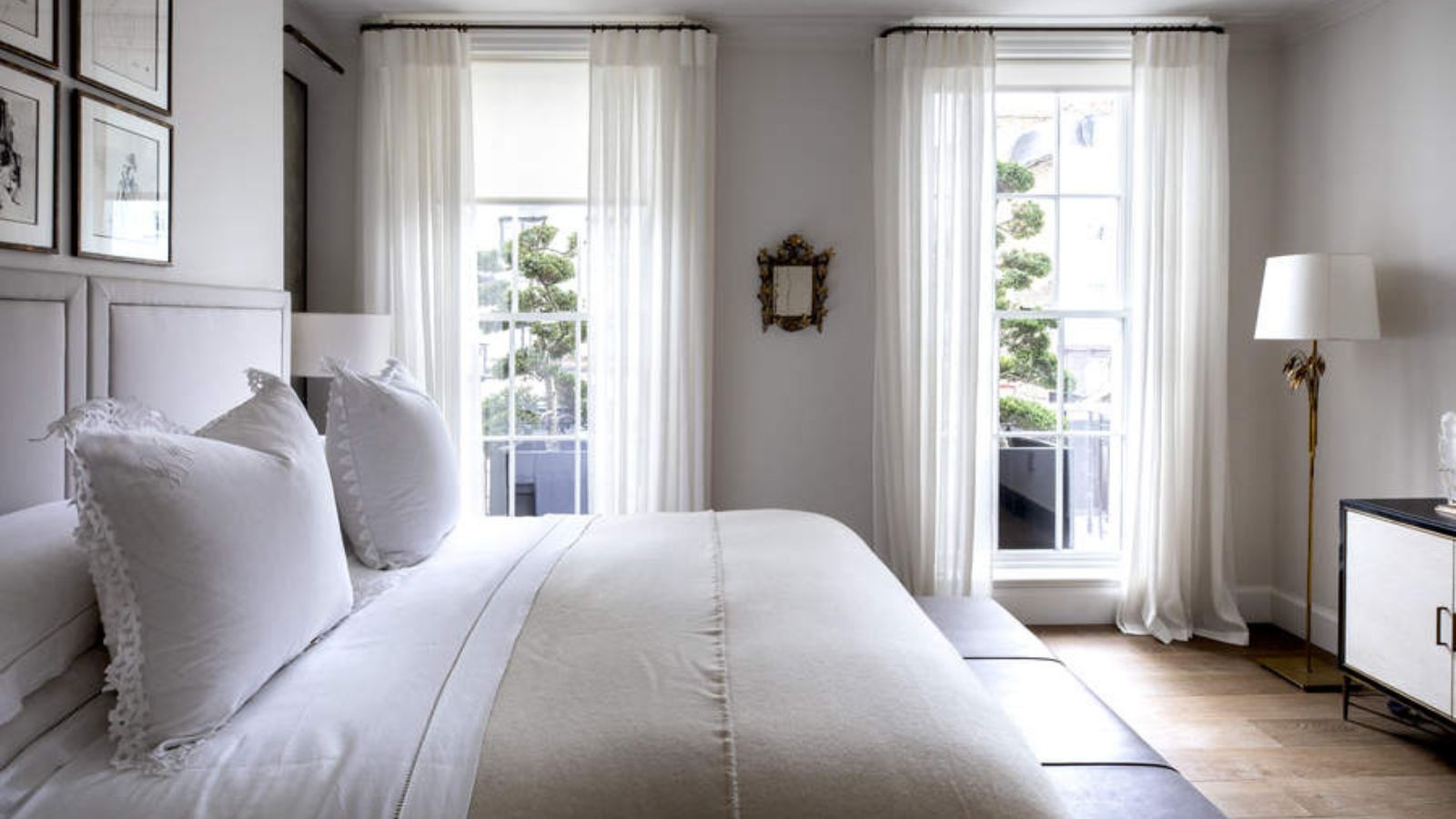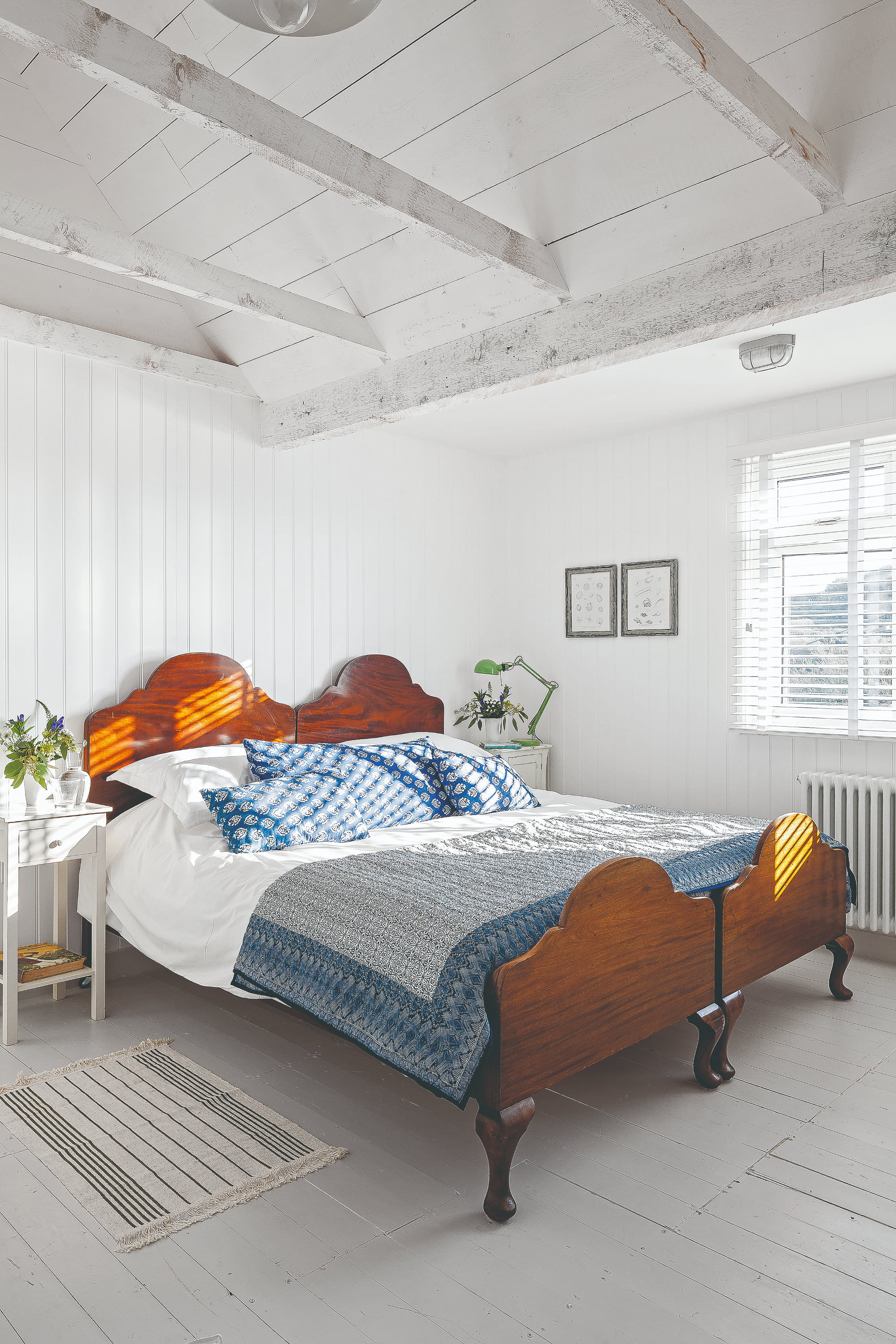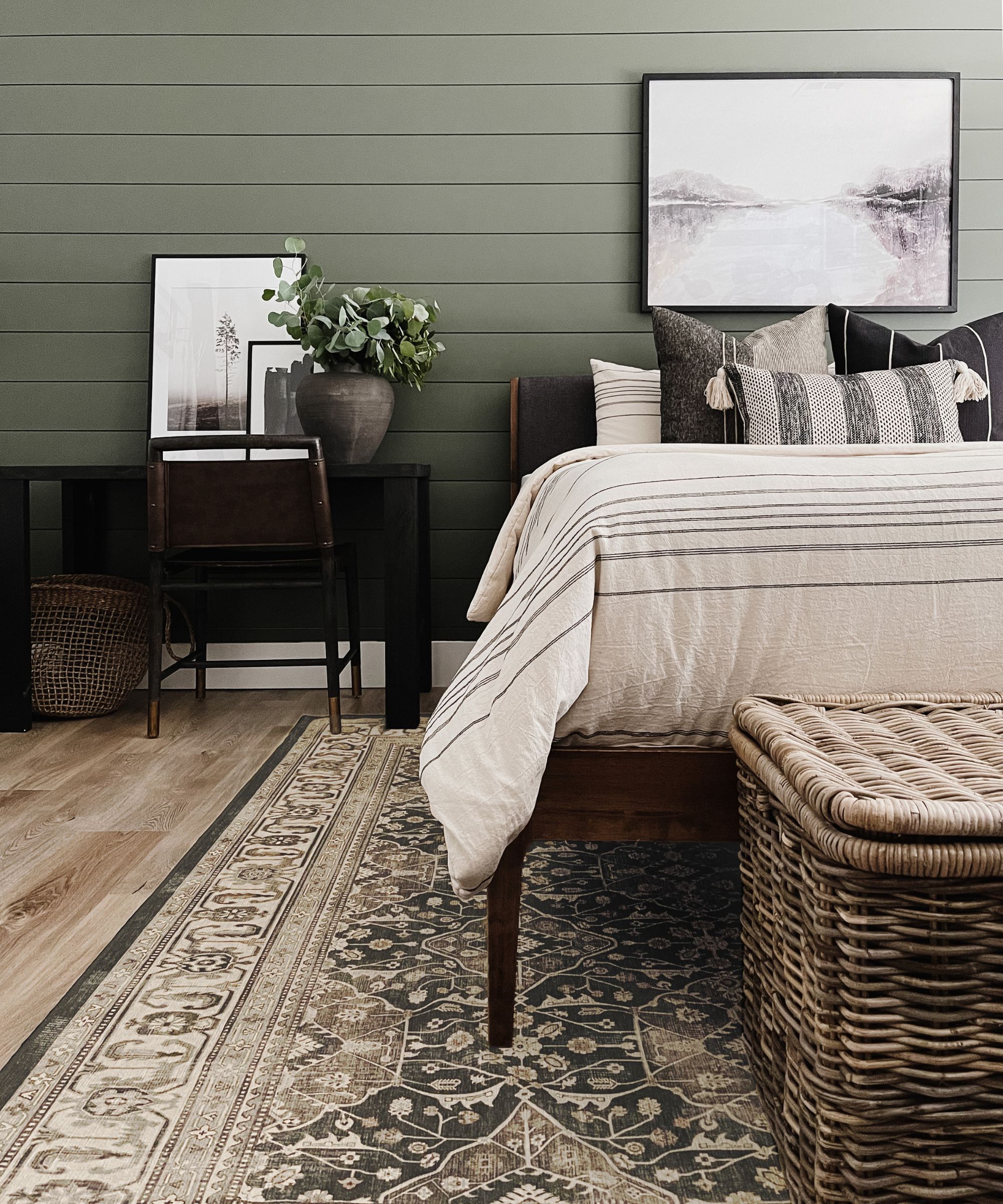You should spring clean your bed and mattress this month – here's how
Follow these tips to keep your bed free of dirt and smelling sweet this springtime


We spend half our lives in bed – that’s a fact. According to research by OnePoll*, the average American will spend 36 years either sleeping or relaxing in theirs – watching TV, reading, scrolling and snacking.
Some people might even prefer to work from bed on WFH days, enjoying the warmth, quietness and the room to spread out across the duvet cum desk.
It’s important then that this hardworking piece of furniture is cleaned thoroughly and regularly. Don’t just stop at changing the sheets, pillowcases and duvet cover every one or two weeks. Your bed will benefit from dusting, vacuuming and deep cleaning to keep it free from stains and allergens, and smelling sweet.
*Survey conducted on behalf of Slumber Cloud
How to spring clean your bed
Cindy Hendler, a home cleaning professional and influencer based in Atlanta, says that because we spend ‘a good portion of our time in beds, cleaning them is important.
‘I’d recommend using mattress pad and pillow covers to protect them, and washing them monthly with a natural, quality washing soap. Sheets should be washed weekly.’
1. Set a schedule

It's a good idea to spring clean your bed at the start of April, in line with the rest of your spring cleaning checklist. But your cleaning routine shouldn't stop there. Follow these rough guidelines to keep your bed clean and smelling fresh year-round:
Design expertise in your inbox – from inspiring decorating ideas and beautiful celebrity homes to practical gardening advice and shopping round-ups.
Every week/two weeks: Dust the bed frame and change your sheets and pillowcases.
Every month/two months: Wash your mattress topper.
Every three to six months: Rotate your mattress 180 degrees to minimize dips and hollows and ensure even wear.
Every six months: Deep clean your mattress and treat dried stains.
2. Clean the base of your bed

Wood
If your bed frames are made from wood, they should be cleaned regularly to stop them becoming dull from dirt. Wood is absorbent, so if dust particles and other grime are allowed to build up, they can get ingrained in the surface. You can remove it with a homemade mix of equal parts white vinegar and warm water. Dip a dry microfiber cloth into the solution, wring it until it is just damp, then dab away stains and dust. Dry with a second clean cloth. You can also remove the mattress and check the slats for dust, dirt, or even signs of mold, which can thrive in humid environments.
Metal
Running a soft, dry cloth across your metal bed frame as often as you clean your bedroom should be enough to keep it free from dust. However, it's also a good idea to wipe down your metal frame with a damp cloth once a month, followed immediately by a dry cloth, to reduce any chance of rust forming.
If the metal has been powder coated, wipe with a solution of mild dish soap and warm water using a brush or cloth, then dry. For copper or brass beds, you can treat tough stains with a dab of ketchup or scrub with a lemon cut in half and sprinkled with salt – the acidity in both should remove the mark.
Fabric
Fabric headboards can be vacuumed regularly to keep the dust at bay. For other marks, such as those caused by hair/body products or food spills, lightly sponge the area with a gentle detergent diluted with lukewarm water. Use a clean damp cloth to remove the soap residue.
Deodorize fabric headboards and frames once a month with baking soda; just sprinkle it on and leave for a couple of hours to absorb the oils, sweat, and stale smells, blot with a paper towel and vacuum away.
Leather
Leather headboards can be cleaned with a damp cloth and treated with leather cream or saddle soap to protect the material and keep it soft. Avoid using harsh chemicals or DIY cleaners that might be too abrasive on the leather and cause it to dry, crack, or lose its color.
Box spring bed
Remove the mattress and vacuum the fabric covering the springs. You can also tilt it on its side or against the wall to clean the underside. Dab stains away with a clean cloth dipped in water mixed with a few drops of mild dish soap. Make sure the areas you’ve cleaned are completely dry before replacing the mattress.

Known as @cleansnob on Instagram, Cindy has 30 years professional experience as a cleaning specialist and is full of useful advice on how to keep a tidy home. She is also an influencer on Amazon where she shares all her latest cleaning finds
3. Check for bugs and mold

While stripping the bed down, check both sides of the mattress for any signs of bed bugs or mold.
Breaking out in itchy red hives can be a sign that you’ve been bitten by a bed bug. Look out for little black dots on the bedding (bug feces), evidence of an infestation. Though irritating, the bugs aren’t harmful and can be easily treated.
Mold thrives in humid environments, such as badly ventilated bedrooms on a hot summer night. As people perspire when they sleep, patches of mold can quickly appear on the mattress and even the wooden slats beneath the bed. A musty odor and black or green spots that feel fuzzy or slimy to the touch are all indicators of mold.
Instead of throwing your mattress out, try treating it first. Vacuum thoroughly, then clean with a damp cloth dipped in a mix of half rubbing alcohol and half warm water or brush with a solution of one part hydrogen peroxide to three parts water. Clean beyond the area of visible mold to kill off unseen spores. Let the mattress dry in direct sunlight, then spritz on an upholstery-safe disinfectant or the remainder of the hydrogen peroxide and water mix and allow it to dry again.
You can purchase food-safe Hydrogen Peroxide from Walmart , as well as this highly-reviewed Lysol Fabric Disinfectant which is ideal for disinfecting upholstery and cleaning your home when someone is sick.
4. Clean your mattress
Just like a carpet, the easiest way to keep a big surface like the mattress clean is by vacuuming, and most mattresses are suitable for doing this…but not all.
The power of the suction can move natural fillings, such as those in a sustainable mattress, out of place, creating lumps and bumps. It can also pull the fibers through the fabric covering. Always check the care label first to make sure it is suitable for cleaning in this way.
Using the upholstery attachment, run across it across the top of the mattress, paying careful attention to the seams and crevices where dirt and skin particles can gather.
‘I recommend a mattress vacuum with a good suction HEPA filter and a UV-C light (which kills bacteria), says Cindy Hendler. ‘Vacuum every two to six months or when you wash your mattress protector. If you sleep with animals, this should be done more often.’
5. Remove stains

If there are fresh or dried marks on your mattress, there are a variety of cleaning agents you can remove them with – including ones from the store cupboard:
Sweat stains
A mild laundry detergent or dish soap mixed with lukewarm water is best, applied with a microfiber cloth. Dab the stain to remove as much as possible – don’t rub or get the mattress too wet, as this could damage it.
Coffee and tea
If you’ve spilled your morning hot beverage in bed, strip off the sheets and mop up the stain immediately with paper towels. Mix a mild detergent with warm water and dab the stain with a cloth. If it’s dried on, try spraying with a solution of water and white vinegar, then apply a paste made of baking soda and gently scrub until the stain has gone. Remove traces of the cleaning agent with a damp cloth and allow it to dry.
Oils
For spilled body or hair oil, try and blot up as much as you can with a paper towel. Don’t rub it, as this could push it further into the mattress. Make a solution of liquid dish soap and water and dab onto the stain with a clean cloth to break down the oil. You can also sprinkle on baking soda and leave it to absorb the oil. After a few hours, vacuum up the powder, then dab the area with a damp cloth to remove any traces of the solution. Allow it to air dry. If the stain persists, try a targeted cleaner designed specifically for removing oil stains
Make up
If your liquid foundation, lipstick or gloss and mascara have leaked onto your bed, scrape any excess off with a butter knife or the edge of a spoon. For foundation, work some shaving foam (which sits on the mattress rather than soaking through) into the stain to clean it. For oil-based lipsticks, dab away with a cotton wool ball dipped in isopropyl rubbing alcohol. In the case of mascara and eyeliner, mix some dishwashing detergent in warm water and blot at the stain with a clean cloth. Wipe away any solutions used with a damp cloth.
Urine
If your pet or young child has had a little accident, act quickly to stop it from soaking in. Strip off the sheets to put in the wash, then blot the stain with paper towels. Use an enzyme-based cleaner such as hydrogen peroxide or a homemade mix of white vinegar and laundry detergent diluted in water. You could also spray a 50/50 mix of vinegar and water on the stained area, then sprinkle on baking soda to draw up the urine. Once the crystals are dry, vacuum the mattress. If smells or stains linger, repeat the process.
Blood
This is a stain that also needs removing as quickly as possible as blood is a biohazard. Mix half a cup of hydrogen peroxide with half a cup of cornstarch and a tablespoon of salt into a paste then apply to the stain and leave it until the hydrogen peroxide stops bubbling. Sweep away the excess then vacuum. For dried blood stains, dab the area with a cloth dipped in cold water, then sprinkle with baking soda. Leave for 30 minutes before wiping it off with a cloth dipped in cold water. Repeat until the stain is gone, and then allow the mattress to dry. Give it a final vacuum to get rid of any baking soda crystals.
Memory foam mattresses are designed to follow the contours of your body, aligning your spine, neck, and hips for a more comfortable night's sleep. But how easy is it to keep this super-absorbent material clean? Follow our tips on how to care for your memory foam mattress and pillow so they stay supportive.

Alison is a contributing gardens writer for Homes & Gardens, writing on a range of topics from plant care to garden design. She has recently landscaped the outside space of her Victorian home, replacing crazy paving and cracked slabs with new lawn, and is currently cultivating a fruit bed.